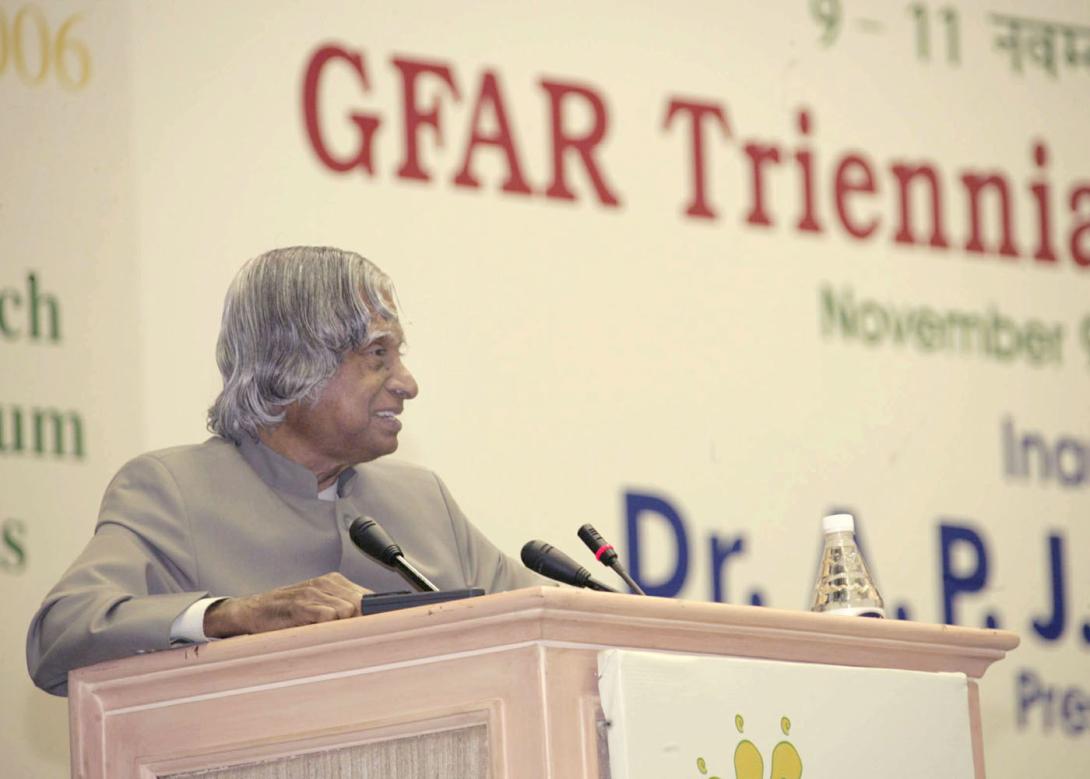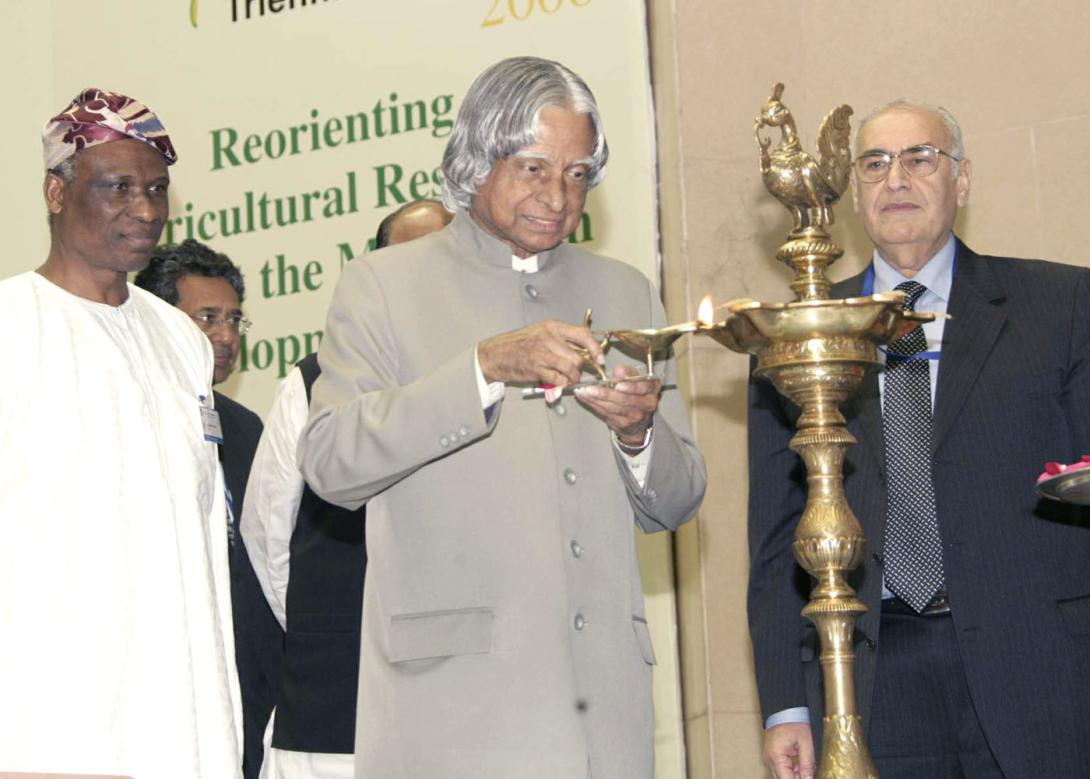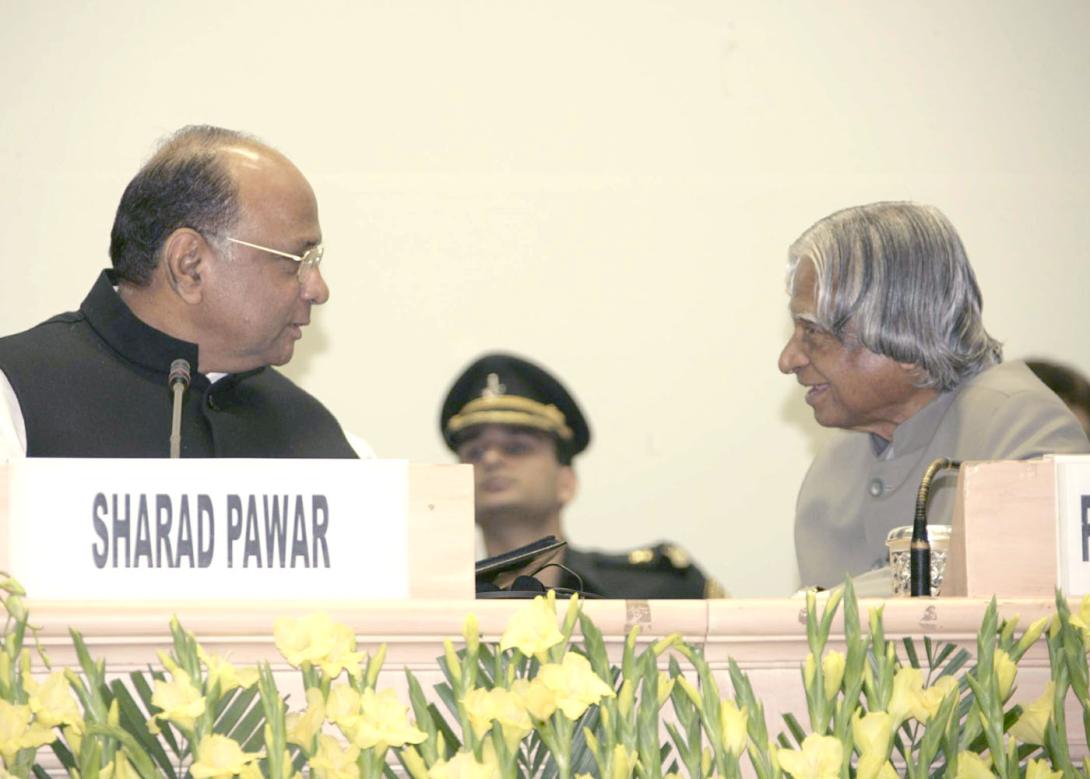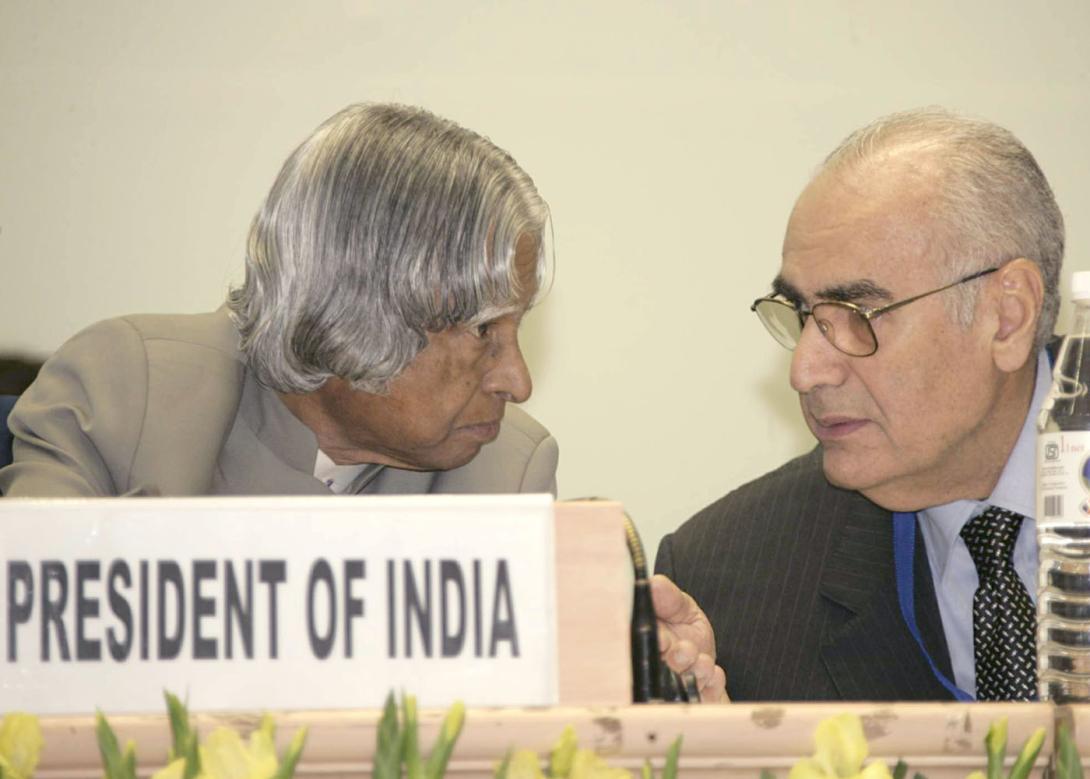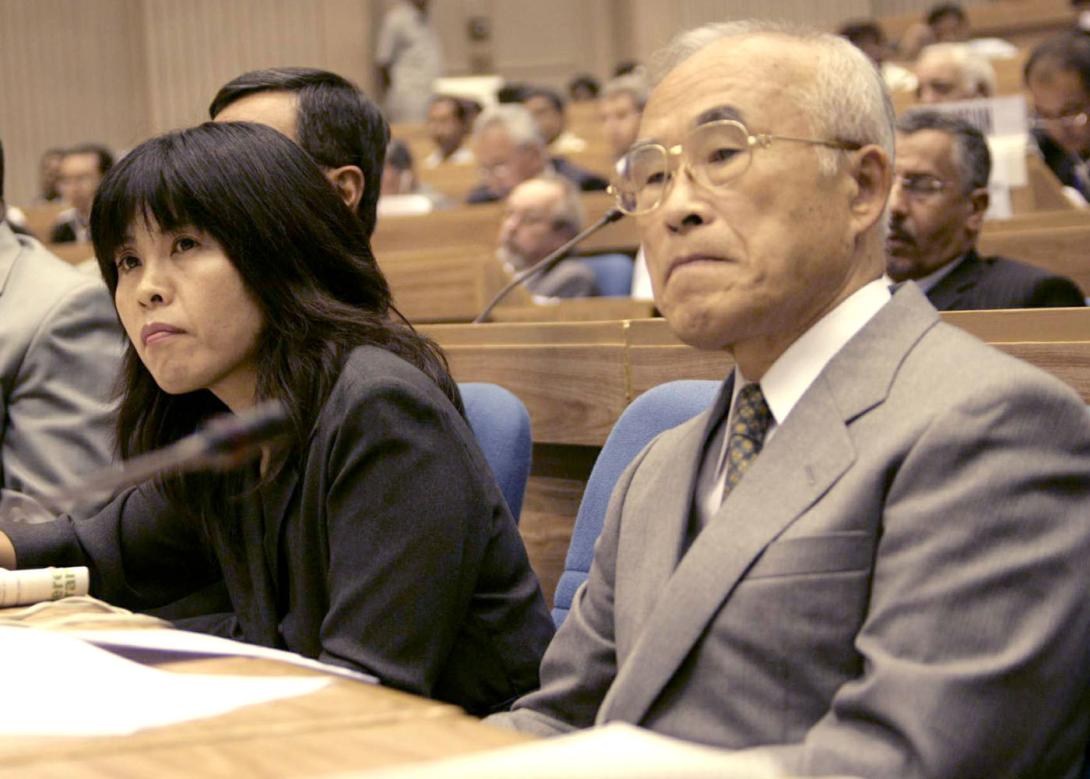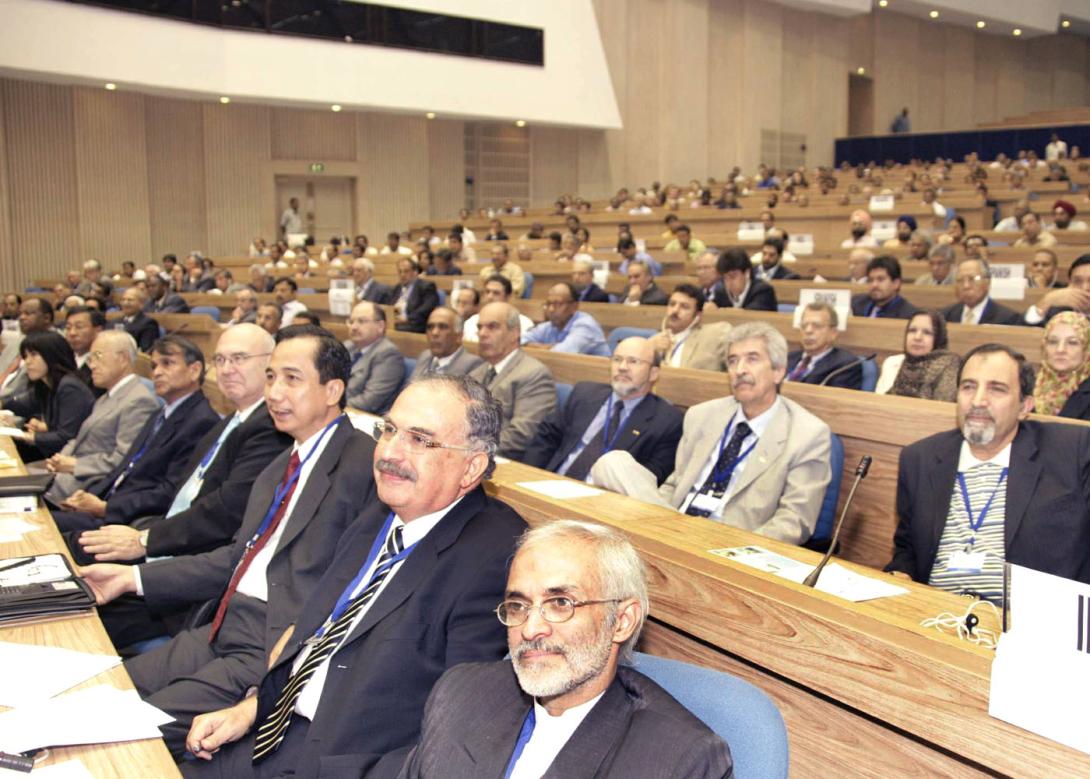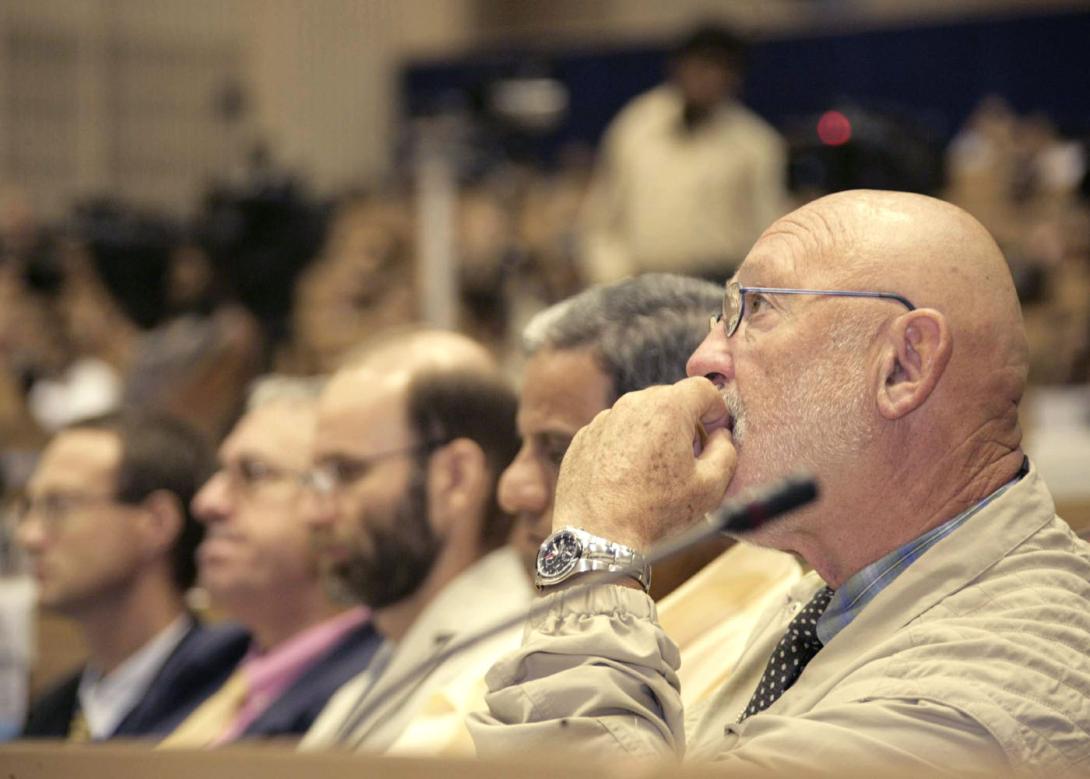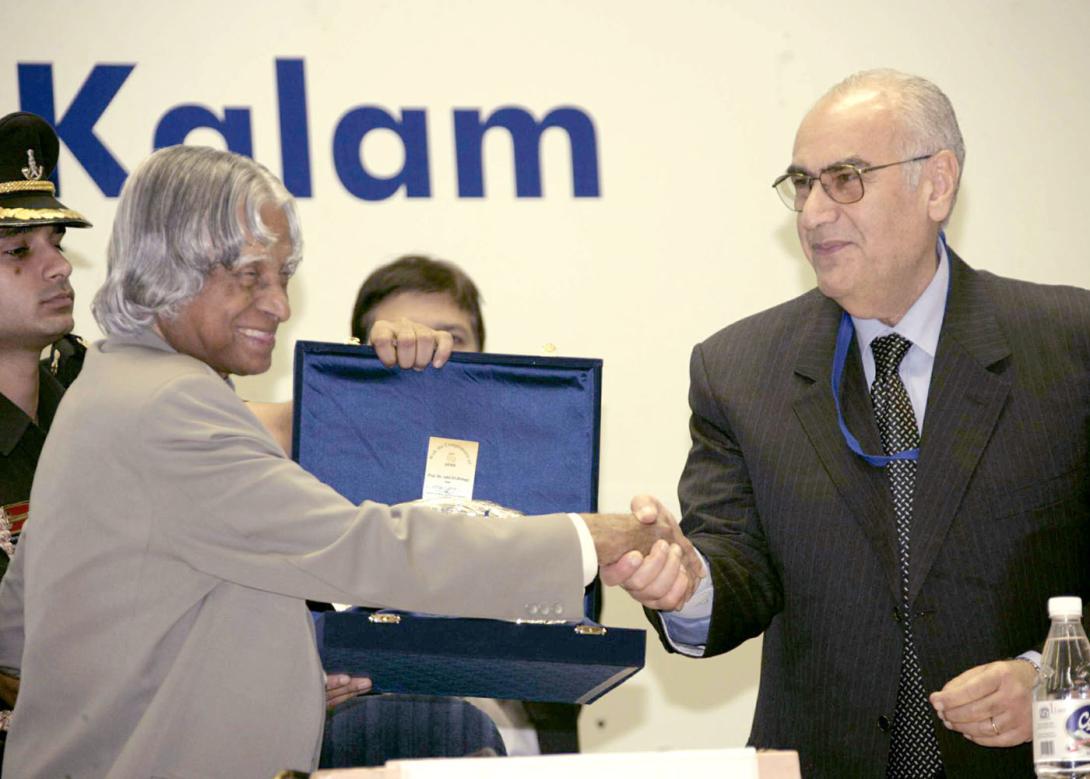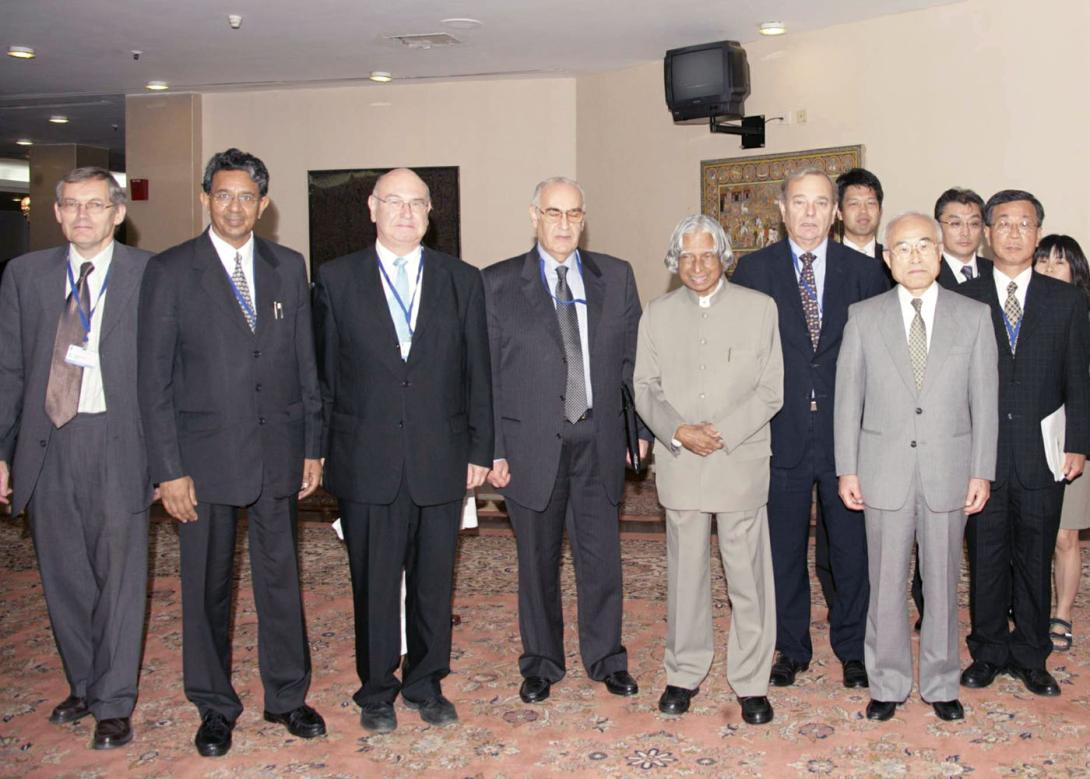Address at the Gfar - Triennial Conference 2006, New Delhi
New Delhi : 09-11-2006
Multi-dimensions of Agricultural Research
Science is a life time mission
I am delighted to participate in the inauguration of Global Forum on Agricultural Research (GFAR) ? triennial Conference 2006 with the theme ?Re-orienting Agricultural Research to meet the Millennium Development Goals?. My greetings to the members of Global Forum on Agricultural Research, Scientists, Planners, Farmers, Administrators, Academicians and distinguished guests. Millennium Development Goals aim at eradication of extreme poverty and hunger, achieving universal primary education, promoting gender equality and empowering women, improving maternal health, combating HIV/AIDS, Malaria and other diseases, ensuring environmental sustainability and developing a global partnership for development. Agricultural research leading to sufficient food production in the planet is indeed an important focus of this international conference. India?s population is billion plus, which is one sixth of the population of the planet.
My discussion will be mostly India?s vision for development through agricultural production. India?s experience may be relevant to many parts of the world.
Green Revolution
As you are aware, the First Green Revolution launched by great visionaries Shri C. Subramaniam and Dr. M.S. Swaminathan in partnership with the agricultural scientists, farmers and entrepreneurs liberated India from the situation of what was called ?ship to mouth existence.? Through an effort of historical magnitude, India attained self-sufficiency in food and could export certain quantity of food-grains. As part of this first green revolution, the country has been able to produce over 200 million tonnes of food grains per year. India is also one of the largest producer of milk. But there are challenges ahead.
India has to now embark upon the Second Green Revolution which will enable it to further increase its productivity in the agricultural sector through research and newer production methodologies. By 2020 India would require to produce over 340 million tonnes of food grains in view of population growth. The increase in the production would have to surmount many impeding factors. The requirement of land for the increasing population as well as for greater aforestation and environmental preservation activities would force a situation whereby the present 170 million hectares of arable land would not be fully available. It might shrink to 100 million hectares by 2020. In addition, there will be shortage of water. Number of farmers available for agriculture will reduce to less than 50%. Our agricultural scientists and technologists have to work for doubling the productivity of the available land with lesser area being available for cultivation with less water and limited number of farmers. The type of technologies needed would be in the areas of development of seeds that would ensure good yield even under constraints of water and land. The second green revolution is indeed a knowledge graduation from characterization of soil to the matching of the seed with the composition of the fertilizer, water management and evolving pre-harvesting techniques for such conditions. The domain of a farmer?s work would enlarge from grain production to food processing and marketing. While doing so, utmost care would have to be taken for various environmental and people related aspects leading to sustainable development. I would like to mention some of the areas in which we need to focus to realize the second green revolution. Definitely re-oriented agricultural research should concentrate on most efficient use of land, water and people.
Certain Research Areas
India has to develop agricultural technology for 89 million hectares of rainfed land out of 170 million hectares. For improving the productivity from this land, we should develop intensive water shed management technologies. Simultaneously, scientists have to work on seed development for such areas. Fortunately, India has also got 70 million hectares of uncultivable land. Our research should be oriented to convert uncultivable land into cultivable land progressively through dry land and saline land cultivation technologies. Some of the possible areas of research in agriculture using Nano technology are Nano-porous zeo-lites for slow-release and efficient doses of water and fertilizers for plant, and of nutrients and drugs for livestock, nano-capsules for herbicide delivery, nano sensors for soil quality and for plant health monitoring. It is also essential to improve efficiency of utilization of water in irrigated land through most water efficient technologies such as drip irrigation.
'Plant Genomics' is the new emerging area of research, which deals with functional and structural definition of genes both in terms of their location in the genome and their expression for defining the precise regulation to control the whole metabolism. This field opens up new avenues to modulate the gene expression in such a way that plants can be converted into proficient genotypes or varieties to be used as the bio-factories producing useful proteins, therapeutic molecules, nutritional compositions and stress tolerant varieties to meet the current and futuristic requirement of the society in eco-environment friendly manner.
Role of agricultural science and scientists should be to find innovative methods using genomic research findings and technologies which will enhance productivity of the agricultural crops and make them tolerant to biotic and abiotic stresses. Also, there will be need to carry out research for developing low cost, energy efficient, environment friendly agro machineries which can be used by small farmers.
Post Harvest Technologies
India is second largest producer of commodities such as fruits and vegetables. One of the key issues which require research is the method by which we can reduce the post harvest loss which is quite substantial at present. This would need design of cost effective, efficient, environment friendly storage system. Also, there is need for value addition to agricultural produce to maximize the agriculture return. The application of nano-technology which is knocking at our doors in food processing are Nano-composites for plastic film coatings used in food packaging, anti-microbial nano-emulsions for applications in de-contamination of food equipment, packaging or food processing.
Plant Stresses
Certain part of the country, at times, faces problems of drought conditions, low temperature spells and salt effect. There is a need to carry out research to find the appropriate genes which will overcome these problems by developing stress tolerant crop varieties. Also it is essential to develop pest resistant crop varieties which can withstand biotic stresses. This will be a boon to the farmers and boost agriculture production substantially. For example, the research group under the leadership of Prof. K. Veluthambi at the Centre for Plant Molecular Biology, Madurai, Kamaraj University has identified 3 anti-fungal genes. This group has developed 30 transgenic rice lines using these genes which overcomes rice blast disease and sheath blight disease. This work is an example of how modern tools of gene science can solve biotic stress by developing high yield, disease and insect resistant crops. Now, I would like to share other experiences of our country, which could be of use to other nations.
Unique farming experience
One of the farmers in Haldwani district in Uttaranchal, grows dwarf Papayas, mangoes, soyabeans, ginger, flowers such as gladiolas, carnation and marigold and also few medicinal plants. This is done through total organic farming and use of vermi-compost. The method of multi-cropping such as simultaneous growing of Papaya and ginger and rotation of different crops during different seasons lead not only to continuous utilization of the land throughout the year but also rejuvenation of the soil characteristics. Apart from this, he produces organic milk by feeding organically grown fodder to the cattle. To maintain the soil health, he ensures that the weeding is done by physical means. The overall economics of this type of farming results in generation of 500% increase in the income for the same area using conventional methods. I would also like to mention the experience of Bihar farmers. Intensive training was given to the farmers by renowned scientists which included use of genetically modified seeds to suit the soil, right type of fertilizer and proper water management and also the importance of when to sow the seed. Many cooperative societies were activated for seed, fertilizer supplies and water management. This experiment resulted in increasing the yield per hectare from 2 tonnes to 6 tonnes. Approach to such innovations will vary as different types of farming techniques would suit different types of soil and agro-climatic conditions. Now, I would like to talk about the role of information technology in agricultural research.
Role of Information Technology
Information Technology should be used for maintaining an updated and enriched database of region specific agricultural information and timely dissemination of the information pertaining to soil enrichment, seed selection, actions relating to arrival of monsoon etc. to the farmers. In addition, information regarding agricultural product preferences ? both national and international, demand-supply status in respect of different products and the current price should be made available on-line to the farmers for taking timely decisions on crop product diversification strategies and positioning of the same in right market to get optimum revenue. The grass-root level democratic institutions should take the lead in central acquisition of the latest information using IT as a tool and make it available to the farmers.
Market Research
There is a need to examine the products which are demanded by the new life-styles of the modern generation. For example, special type of corn is required for making corn flakes and unique potato crop for making wafers. Hence farmers are required to take the demand of the end processed product into account while selecting the crop. Government agencies should facilitate dissemination of such information for enabling the farmers to get better value for their increased output.
The agro-processing industry has to take into account the retention of the nutritional value, possible side effects due to the use of additives and preservatives for increasing the storage life and aesthetic, eco-friendly and cost effective packaging. In addition the agriculture and agro-processing industry in India have to master many new standards and perceptions for cleanliness, generally described as phyto-sanitary requirements. Scientists have to re-orient their research projects to achieve the above.
Suggested R&D Areas
Since, I am in the midst of agriculture researchers from over 80 countries; I would like to suggest certain R&D missions, which can be carried out collaboratively among nations.
1. High yielding varieties
The productivity of the current varieties have reached a plateau. We have to develop high yielding varieties in addition to higher yield with more quality characteristics viz., more Vitamins and Minerals, which will help to reduce the nutritional dependent health problems. Eg. 1. Lack of ?Vitamin-A? in the food leads to Night blindness. To overcome this problem rice and other stable food must possess adequate quantity of vitamin A. Research in Genetically Modified plants such as Golden Rice Programme, needs to be hastened up.
2. Tissue culture and Clonal propagation
There is a great variation in the productivity. Wherever possible micro propagated plants should be used which has high yield capability and are disease free.
3. Global warming
has resulted in increased CO2 % in the atmosphere. It favours C3 plants (Rice, wheat, etc.) breeding which has to be oriented towards enhanced yield by absorbing more CO2 in the atmosphere and increasing the yield.
4. Radio-isotopes
R&D can be focused on using radio isotopes to diagnose nutritional deficiency in plants and soils for precise application of fertilizers.
5. Precision farming and Automization
R & D should concentrate on precision agriculture. Mechanization has to be resorted to for providing right quantity of water and nutrition to the crops.
6. Energy farming
a. Waste land has to be fully utilized for energy crops (Sweet sorghum, Sugarbeet, cassava for ethanol production). Appropriate technologies have to be developed for making these crops economically viable.
b. R&D for power generation through biomass which has extensive application in agriculture.
7. Assistive technologies for farms
From environmental consideration and reduce the availability of fossil fuel we have to design farm vehicles and farm equipments which can be run on 100% bio-fuels or electrically operated. Researchers must focus on developing intelligent farm machines. For example, a harvester should record the yield per unit area while harvesting. Intelligent mechanization like weeding only weeds and not the plants has to be developed.
While taking multi-dimensional approach to agricultural research towards second green revolution, it is essential to capture the traditional knowledge of farmers and their experiences for developing appropriate technologies.
Conclusion
I would like to mention one incident which I consider very important for promoting quality research. Nobel Laureate Prof. Norman E Borlaug, a well known agricultural scientist and a partner in India?s first Green revolution was receiving M.S. Swaminathan Award, at Vigyan Bhavan, New Delhi on the 15th of March 2005. Prof. Borlaug, at the age of 91, was in the midst of all the praise showered on him from everybody gathered there. When Prof Borlaug?s turn came, he got up and highlighted India?s advancement in the agricultural science and production and said that the political visionary Shri C. Subramaniam and agricultural scientists Dr.M.S. Swaminathan were the prime architects of First Green Revolution in India. He also recalled with pride, Dr. Verghese Kurien who ushered White Revolution in India. Then the surprise came. He turned to scientists sitting in the third row, fifth row and eighth row of the audience. He identified Dr. Raja Ram, a wheat specialist, Dr S K Vasal, a maize specialist, Dr. B. R. Barwale, a seed specialist. He said, all these scientists had contributed for India?s and Asia?s agricultural science. Dr. Borlaug introduced them to the audience by asking them to stand and ensured that the audience cheered and greeted the scientists with great enthusiasm. This scene I have not witnessed in our country before. This action of Dr. Norman Borlaug, I call it as a Scientific Magnanimity. Friends, if you aspire to achieve great things in life, you need Scientific Magnanimity. It is my experience that great mind and great heart go together. This Scientific Magnanimity will motivate the scientific community and nurture team spirit and lead to newer discoveries and innovation in reorienting agriculture research.
With these words, I inaugurate the GFAR ? triennial Conference 2006 with the theme ?Re-orienting Agricultural Research to meet the Millennium Development Goals?. I wish the participants all success in their mission of realizing the Millennium Development Goals.
May God bless you.

